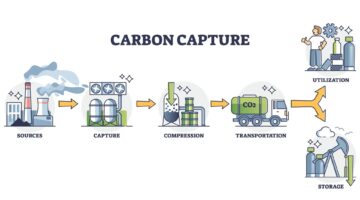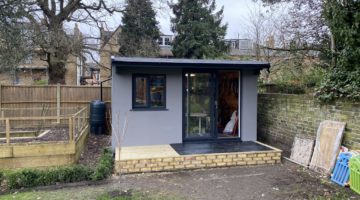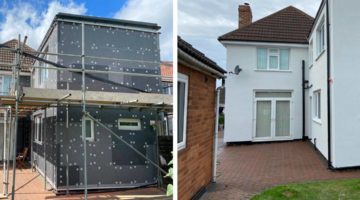
When you are getting a quote for external insulation, it is a little tricky to know what to look for. There are so many different names and systems out there that it is easy to get confused. One thing to remember is that which installer you use is just as important as the system you choose. A poorly installed insulation system will cause you a lot of problems.
The key elements in external wall insulation are the insulation material and the type of render finish. Let’s take a look at the different materials.
Mineral Wool, EPS, or Wood Fibre?
There are two main types of insulation board – mineral wool insulation and EPS. Mineral wool is the same type of material often used in lofts and cavity walls, except it is compressed into a sturdier rigid board. Mineral wool is a durable and breathable material that can be used on most external insulation applications.
Expanded polystyrene insulation is probably the more common material for external applications. There are a couple of reasons for this. For one, EPS is a fair bit cheaper than rock wool so it is the obvious choice for funded insulation jobs. Furthermore, EPS is actually a better insulator than mineral wool, so you will require a thinner layer of insulation to achieve the same effect. An 100mm EPS layer would require a 120mm mineral wool layer to get the equivalent insulating performance.
The new kid on the block in Wood Fibre insulation. The Pavatex Wood Fibre used by our partnered installers is a completely renewable material with extremely low pollution levels, and is able to bring down the U values of your external walls massively. It is breathable, lightweight, environmentally friendly, providing a tight thermal envelope and improved indoor air quality.
What type of render?
There are three types of render that you may be offered from the typical installer. Each has its own benefits and drawbacks.
Acrylic render is a plastic-based material. It is also the cheapest of the three main types of render. Furthermore, it tends to hold colour really well, so if you are going for a bright colour, acrylic might well be considered. It does have some drawbacks, however. On a property that is moving around at all (you tend to see this on older houses especially), you are more liable to cracking in the render, purely because acrylic render doesn’t have as much give as other render types.

Silicon render is the most expensive, but is easier to install than mineral render and has a number of advantages. For starters, it is very flexible, and less likely to crack over the years as the house settles. This is a big advantage on older houses, or those where the render has cracked in the past. Furthermore, silicon render is more breathable than the other types of render, and therefore works well in an installation where breathability is important. It is a great material to work with too, as you don’t need to mix it up like mineral render. We recommend silicon render in the majority of jobs, even though it may be a touch more expensive.
Which brand is best?
There are a huge number of external insulation systems out there. Each one is based on the same basic principles, but we really recommend going for one with BBA accreditation. This accreditation is a rigorous process, and you can be sure that when you get a BBA-approved system installed, you are getting a product that is truly fit for purpose.
We operate in partnership with EWI Store, suppliers of full BBA approved systems. We work closely with them and their network of fully trained render and insulation professionals, using some of most cutting edge external insulation technology and supplying insulation systems guaranteed for up to 25 years.













No Comments yet! Be the first one.